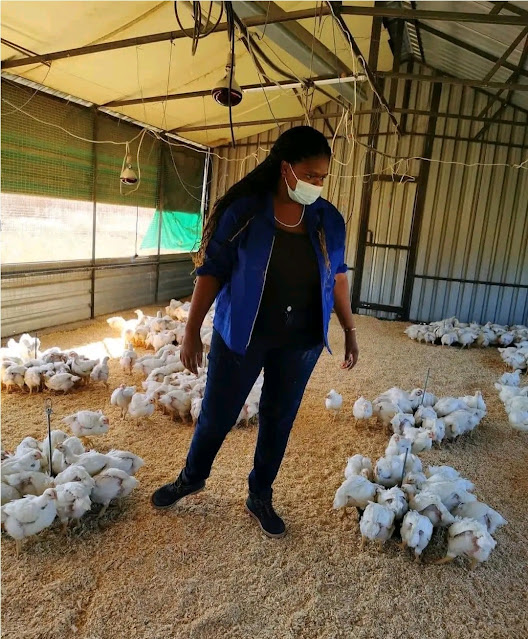Poultry farming is one of the
fastest-growing businesses in Africa. It's a highly profitable business if you
run it in the most appropriate manner, which provides a conducive environment
for the birds.
If you are planning to invest in poultry
this year, here are 10 key areas to focus on to stay ahead of the competition.
1. Don't buy cheaper feed
Feed is the biggest component of the cost
of any chicken production, be it meat or egg production. It accounts for 70
percent of all the other components. The major component of feed is maize and
soya and those two are not cheap. Buy feed that will consistently give you the
target kilo of meat per feed fed and the target amount of eggs per kilogram of
feed at a lower cost and not at a cheaper cost. The two are different.
2. Measure the feed you give your flock daily
Some farmers just give feed to their
birds. This must stop if you want to make a profit. You must measure a gram per
bird of all the feed allocations daily as per the established standards of your
breed. In some farms I have gone to, 10 percent of the feed is wasted on the
floor or the litter and goes unaccounted for. Build a habit of calculating how
much feed is being converted to kilograms of meat or eggs. As a rule of thumb,
1kg of layer feed should give you 5 to 6 eggs during production and 1.6 to 7kg
of broiler Crumble feed should give you 1kg of live weight, this is the feed
conversion ratio.
3. Weigh a sample of your birds regularly
Make a habit of weighing 5 percent of your
birds from the date of placement to the week of slaughter or point of lay if
they are pullets. This practice though laborious, will inform you when things
are going wrong early in advance for you to make corrective actions.
4. Spend some time in the flock unit
Set aside some time to walk in your flock
unit. The best times to visit the flock are very early in the morning during
feeding time and late in the evening just before the lights go out. We refer to
this as ‘walking the birds’. It’s during this period when you physically
appraise your flocks on feeding habits, watering, flock density, and general
health. It also reduces incidences of flip over or heart attack.
5. Invest in a footbath at every entrance to the poultry
unit
Footbaths are the best and first line of defence
for your flocks in case of a disease outbreak. Ensure you always keep it clean
and regularly replaced it with a potent disinfectant.
6. Restrict visitors to your farm
Biosecurity is all about processes or
procedures that you must put in place to prevent the introduction of
disease-causing organisms or agents from infecting your precious flocks. Avoid
unnecessary visitors into the precincts of your flocks, as history has it that
people are the main conveyors of poultry disease agents.
7. Vaccinate your birds as per your health plan
Just like you insure your car against
unknown accidents, likewise, you vaccinate your birds against airborne diseases
whose spread cannot be prevented through physical barriers. Do not skip
vaccinations as this exercise is the single most important activity that boosts
the immune system of birds against some of the worst notifiable diseases like Gumboro, Newcastle,
and fowl typhoid.
8. Know your customers and reach them directly
Take time to know your customers and build
a long-lasting relationship. This is your year of severing that relationship
with power brokers or cartels, whose interests are buying birds cheaply and
selling to restaurants, and fast-food managers at high prices.
9. Keep records
Record keeping is an important tool to assess your performance and shed light on areas
that need improvement. Record your feed consumption, weights, losses,
temperatures, visitors, profit margins, water intakes, and gains in weights.
Compare the performance of each flock against the previous.
10. Invest in Chicken Welfare
Keep your chickens healthy and happy
always, avoid the use of unnecessary prescription medication, and give them
plenty of water and space for growing, playing, and sleeping. Keep litter dry
and allow birds to exercise and exhibit their natural feelings in a conducive
environment.
If you enjoyed this
post about poultry farming business and would love to see more, join us on YouTube, Instagram, Facebook & X !


Comments
Post a Comment